
Molds & Accessories
XRF & KBR steel ring lab Powder Pellet Pressing Mold for FTIR
Item Number : PMXS
Price varies based on specs and customizations
- Material
- Cr12MoV
- Indenter hardness
- HRC60-HRC62
- Sample size
- φ32 / φ40 mm
- Cavity depth
- 45 mm
- External dimensions
- φ73×133 mm
Shipping:
Contact us to get shipping details Enjoy On-time Dispatch Guarantee.
Why Choose Us
Reliable PartnerEasy ordering process, quality products, and dedicated support for your business success.
Applications
XRF steel ring lab Powder Pellet Pressing Mold is used for the molding of X-ray fluorescence spectrometer samples. The stainless steel ring is used as the support ring of the sample. The tableting speed is fast and the molding effect is good.
Special sizes press molds can be customized according to customer requirements.
Detail & Parts
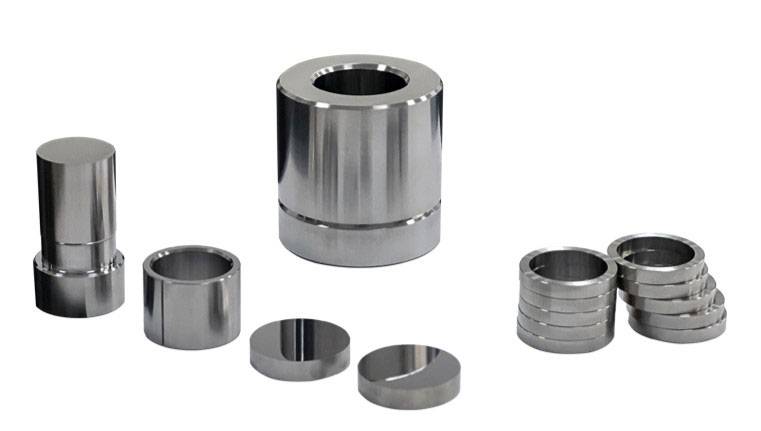


Technical specifications
| Instrument model | PMXS | |
|---|---|---|
| Sample shape | 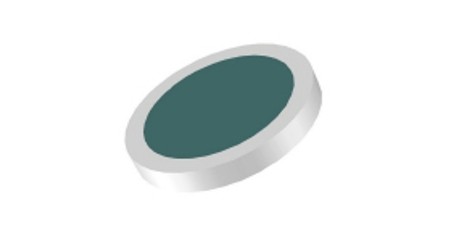 |
|
| Die material | Alloy tool steel :Cr12MoV | |
| Indenter hardness | HRC60-HRC62 | |
| Sample size | Φ32、Φ40mm (M) | |
| Cavity depth | 45m (N) | |
| Dimensions | Φ73*133mm(L*H) | |
| Weight | 3.2Kg | |
| Diagram of hydraulic powder press size | 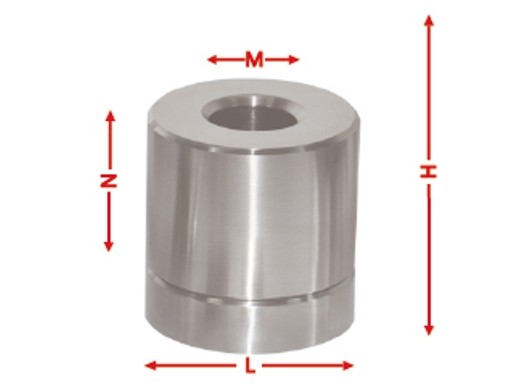 |
|
Operation steps
The steel ring mold is a tool used for molding X-ray fluorescence spectrometer samples. It uses a stainless steel ring as the support for the sample and has a fast tableting speed with good results. The mold produces tablets with an outer diameter of 40mm, inner diameter of 32mm, sample size of 32mm, and a pressing thickness of 5-8mm. Custom sizes are available upon request.

Step 1:Assemble the mold according to the mold operation diagram and install the sample inside the cavity.
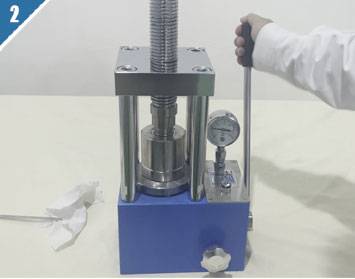
Step 2: Place the mold in the center position of the tablet press and apply pressure to the required sample pressure.

Step 3: Assemble the mold according to the schematic diagram of the mold withdrawal process, place it in the tablet press, and use a screw to push the sample out of the mold sleeve.

Step 4: Remove the mold from the tablet press and gently remove the sample.
Precautions for mold maintenance
To ensure accurate test results, clean the mold surface with dust-free paper before each use to avoid the anti-rust oil from affecting the sample. Avoid exceeding the maximum pressure when applying pressure. Clean the mold and samples after use to prevent corrosion. Apply anti-rust oil and store the mold in a dry environment if not used for a long time to prevent damage.
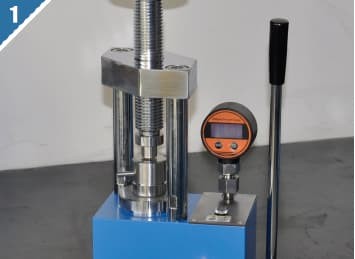
Step 1: Placing the Mold.
To begin, place the mold in the center of the tablet press. It is important to note that the maximum pressure of the mold cannot be exceeded when pressurized. This will prevent any damage to the mold and ensure accurate test results.

Step 2: Cleaning the Mold.
After each use, it is essential to clean the mold to prevent any contamination of the sample. Using dust-free paper, wipe the surface of the mold clean. If there are sample residues on the surface that cannot be removed, please do not use chemical reagents to clean and soak. This could potentially damage the mold and impact the accuracy of the test results.

Step 3: Applying Anti-Rust Oil.
If the mold is not used for an extended period, it is recommended to apply anti-rust oil on the surface of the mold to prevent rusting. This step will help prolong the life of the mold and ensure that it remains in good condition for future use.
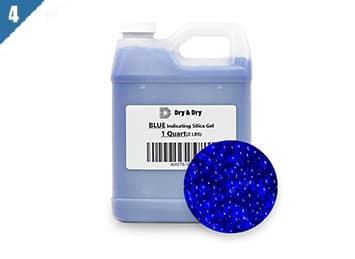
Step 4: Storing the Mold.
Lastly, if the mold is not used for a long time, it needs to be stored in a dry environment. This will prevent any moisture from accumulating on the mold and causing damage.
Full range of lab press types
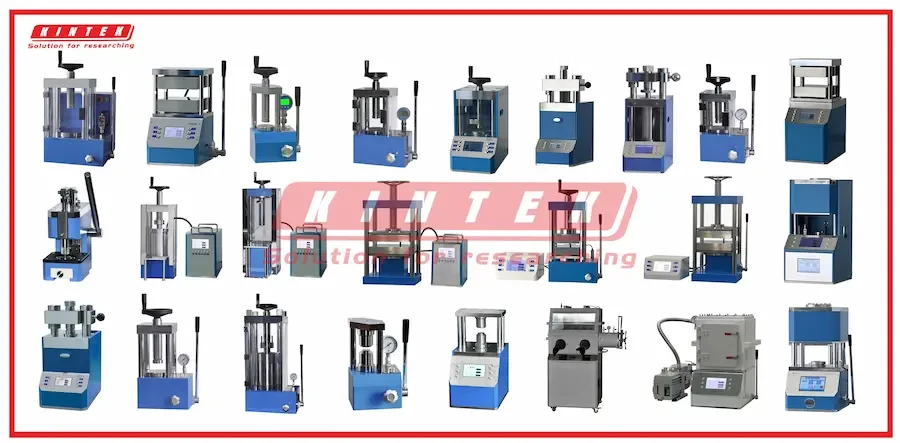
Click to view our full range of lab press products.
Any question? Our experts have helped many laboratories choose their lab press, contact us now!
Full range of types of laboratory press molds
We have a full range of molds for you to choose from, and the molds fit the body perfectly.
If you need molds with special shapes, we can also customize them for you.
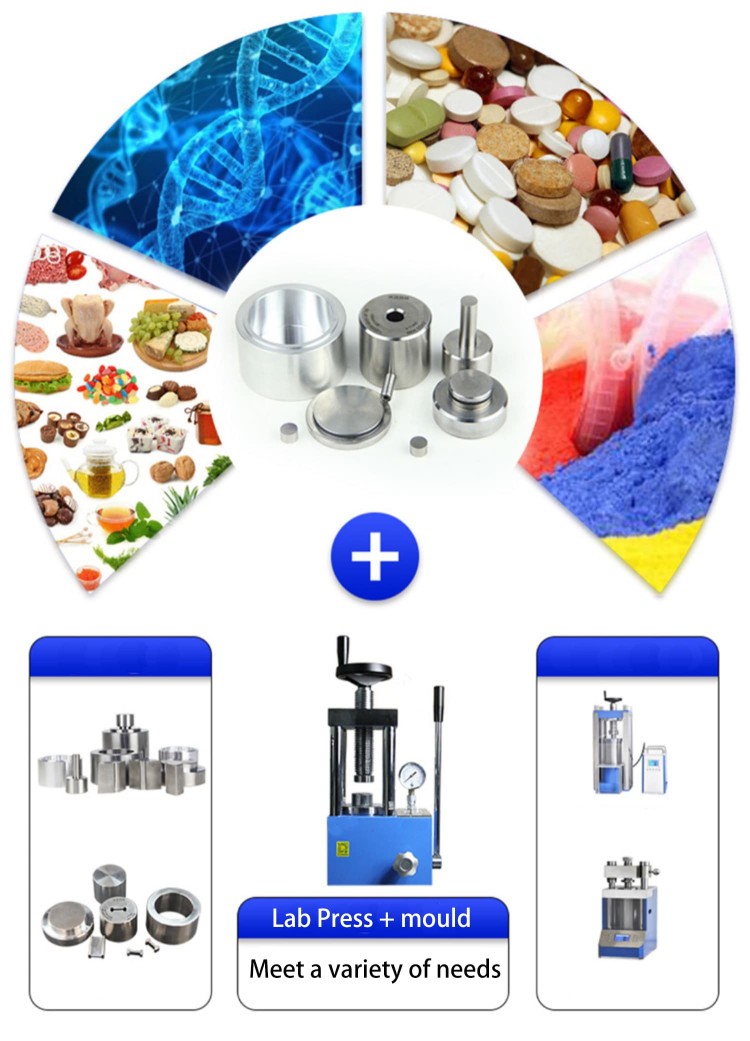
Warnings
Operator safety is the top important issue! Please operate the equipment with cautions. Working with inflammable& explosive or toxic gases is very dangerous, operators must take all necessary precautions before starting the equipment. Working with positive pressure inside the reactors or chambers is dangerous, operator must fellow the safety procedures strictly. Extra caution must also be taken when operating with air-reactive materials, especially under vacuum. A leak can draw air into the apparatus and cause a violent reaction to occur.
Designed for You
KinTek provide deep custom made service and equipment to worldwide customers, our specialized teamwork and rich experienced engineers are capable to undertake the custom tailoring hardware and software equipment requirements, and help our customer to build up the exclusive and personalized equipment and solution!
Would you please drop your ideas to us, our engineers are ready for you now!
FAQ
What Is A Press Mold?
What Is Press Mould In Ceramics?
How Do You Prepare Pressed Pellets For XRF?
How Are Pellet Molds Used?
What Pressure Should XRF Pellets Be?
What Types Of Materials Can Be Pelletized Using Pellet Molds?
What Is The Advantage Of XRF Pressed Pellet Technique?
How Can One Select The Appropriate Pellet Mold For Their Specific Application?
4.9
out of
5
The XRF steel ring mold is a great addition to my lab. It produces high-quality pellets that are perfect for XRF analysis. I highly recommend this product.
4.7
out of
5
This product has helped me save time and money in my lab. It's a great tool for pressing powders into pellets for XRF analysis.
4.8
out of
5
I've been using this product for a few months now and I'm very happy with it. It's easy to use and produces consistent results. I would definitely recommend it to other labs.
4.6
out of
5
This product is a must-have for any lab that does XRF analysis. It's a great value for the price and it produces high-quality pellets.
4.9
out of
5
I'm very impressed with this product. It's made of high-quality materials and it's very durable. I've been using it for several months now and it still looks and works like new.
4.7
out of
5
This product has exceeded my expectations. It's very easy to use and it produces consistent results. I would highly recommend it to other labs.
4.8
out of
5
I'm very happy with this product. It's a great value for the price and it produces high-quality pellets. I would definitely recommend it to other labs.
4.6
out of
5
This product is a great addition to my lab. It's easy to use and it produces consistent results. I would definitely recommend it to other labs.
REQUEST A QUOTE
Our professional team will reply to you within one business day. Please feel free to contact us!
Related Products

XRF Boric Acid Lab Powder Pellet Pressing Mold for Laboratory Use
Get accurate results with our XRF Boric Acid lab Powder Pellet Pressing Mold. Perfect for preparing samples for X-ray fluorescence spectrometry. Custom sizes available.

Laboratory Hydraulic Pellet Press for XRF KBR FTIR Lab Applications
Efficiently prepare samples with the Electric Hydraulic Press. Compact and portable, it's perfect for labs and can work in a vacuum environment.

Introducing the KINTEK KBR Press - a handheld laboratory hydraulic press designed for entry-level users.

Round Bidirectional Press Mold for Lab
The round bidirectional press mold is a specialized tool used in high-pressure molding processes, particularly for creating intricate shapes from metal powders.

No Demolding Lab Infrared Press Mold for Laboratory Applications
Effortlessly test your samples with no demolding required using our lab infrared press mold. Enjoy high transmittance and customizable sizes for your convenience.

Anti-Cracking Press Mold for Lab Use
The anti-cracking press mold is a specialized equipment designed for molding various shapes and sizes of film using high pressure and electric heating.

Assemble Lab Cylindrical Press Mold
Get reliable and precise molding with Assemble Lab Cylindrical Press Mold. Perfect for ultra-fine powder or delicate samples, widely used in material research and development.

Special Heat Press Mold for Lab Use
Square, round and flat plate forming dies for hot presses.

Special Shape Press Mold for Lab
Discover high-pressure special shape press molds for diverse applications, from ceramics to automotive parts. Ideal for precise, efficient molding of various shapes and sizes.
Related Articles

Operating of Automatic Lab xrf Pellet Press
How to use the Automatic Lab xrf Pellet Press, including steel ring, plastic ring, boric acid mold

Effective Preparation of Samples for XRF Analysis via Pressed Pellets Method
The process of making pressed pellets for XRF analysis is a popular and widely used method. It offers several advantages over other sample preparation techniques. Pressed pellets have a higher signal-to-noise ratio compared to loose powder samples, allowing for the detection of even the lightest elements.

What is xrf analysis and how to making pressed xrf pellets
What is xrf analysis and how to making pressed xrf pellets, there are also some precautions in the xrf sample preparation process

Guide for Xrf Pellet Press
An XRF tablet press is a machine used to prepare samples for X-ray fluorescence (XRF) analysis by pressing them into a uniform tablet or pellet form.

A Comprehensive Guide on Pressing XRF Pellets Using a KinTek Automatic Hydraulic Press
XRF (X-ray fluorescence) analysis is a powerful technique used in various industries for material analysis. One crucial step in the XRF analysis process is the preparation of high-quality XRF pellets. These pellets serve as the sample for analysis and need to be properly pressed to ensure accurate results.

Automated laboratory XRF and KBR pellet press operating procedures
Introduction to automated laboratory XRF and KBR pellet press operating procedures.

How to Choose the Right XRF Pellet Press for Your Needs
X-ray fluorescence (XRF) analysis requires the preparation of uniform, high-quality pellets for accurate analysis. To achieve this, there are several XRF pellet preparation methods available, including hydraulic, manual, and automated presses.

XRF Pelletising for Solid Samples Tips and Tricks
X-ray fluorescence (XRF) analysis is a non-destructive analytical technique used to determine the elemental composition of solid, liquid, and powdered samples.

Determining Optimal Pressure for XRF Pellet Pressing
The process of XRF pellet pressing involves applying pressure to a sample to create a solid pellet that can be analyzed by an X-ray fluorescence (XRF) spectrometer. Optimal pressure is crucial for achieving accurate and reliable results in XRF analysis.

Pressing Powder Samples and Molding Polymer Films: A Comprehensive Guide
Pressing powder samples is done to create a solid material that remains intact even after the load is removed. This process involves pushing the powder grains closer together, closing the gaps between them and forcing them to flow and rearrange themselves into a more compact arrangement. As the available volume reduces, the flow of particles stops, and they undergo plastic and elastic deformations that result in bonding between the grains.

Techniques for Sample Preparation in X-Ray Fluorescence Analysis: Pressed and Loose Powder Methods
X-ray fluorescence (XRF) analysis is a common technique used for analyzing powders in various industries. When it comes to preparing powder samples for XRF analysis, there are two main methods: pressed powder method and loose powder method.The pressed powder method involves compressing the sample into a pellet or disk, while the loose powder method involves simply placing the sample into a cup or container. Each method has its advantages and disadvantages, and the choice of method depends on the specific requirements of the analysis.

The Impact of Pressure on XRF Pellet Quality
X-ray fluorescence (XRF) analysis is a non-destructive method used to determine the elemental composition of a sample. Sample preparation is a crucial step in XRF analysis and is essential for obtaining accurate results.